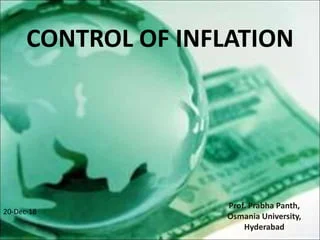Currency depreciation refers to a decline in the value of a country’s currency relative to other currencies. This phenomenon can significantly impact a country’s economy, trade balance, and inflation. Various factors contribute to currency depreciation, and understanding these causes is essential for assessing economic conditions. Here are some of the primary factors that can lead to currency depreciation:
1. Inflation Rates
- Higher Inflation: When a country experiences higher inflation rates than its trading partners, its currency can depreciate. Increased inflation erodes the purchasing power of the currency, making it less attractive to foreign investors. As prices rise domestically, exports may also become more expensive for foreign buyers, leading to a decrease in demand for the currency.
2. Interest Rates
- Lower Interest Rates: Central banks control interest rates, and lower interest rates can lead to currency depreciation. When a country’s interest rates are lower than those of other countries, investors may seek higher returns elsewhere, leading to capital outflows. This reduced demand for the currency can cause its value to fall.
3. Economic Performance
- Weak Economic Indicators: Poor economic performance indicators, such as high unemployment rates, low GDP growth, or declining industrial output, can lead to currency depreciation. If investors perceive that a country’s economy is weakening, they may sell off assets denominated in that currency, decreasing its value.
4. Political Stability and Economic Uncertainty
- Political Instability: Political turmoil, uncertainty, or instability can undermine investor confidence and lead to capital flight. When investors lose faith in a country’s governance or economic stability, they may move their investments to safer, more stable environments, causing the currency to depreciate.
5. Trade Balance
- Trade Deficits: A country with a persistent trade deficit, where imports exceed exports, can experience currency depreciation. A trade deficit indicates that a country is buying more from foreign countries than it is selling, leading to increased demand for foreign currencies and a decrease in demand for the domestic currency.
6. Speculation and Market Sentiment
- Investor Speculation: Currency markets are influenced by speculation. If traders believe a currency will depreciate in the future, they may sell off that currency now, leading to a self-fulfilling prophecy. Negative sentiment surrounding a currency can exacerbate its depreciation.
7. Government Debt
- High Levels of Public Debt: A country with high levels of public debt may face currency depreciation, especially if investors worry about the government’s ability to repay its debts. This concern can lead to decreased demand for the currency as investors seek safer options.
8. Monetary Policy
- Expansionary Monetary Policy: Central banks may implement expansionary monetary policies, such as quantitative easing, which involves increasing the money supply. While these policies can stimulate economic growth, they can also lead to currency depreciation by increasing the supply of money relative to demand.
9. Global Economic Conditions
- Global Market Dynamics: Changes in global economic conditions, such as recessions or slowdowns in major economies, can lead to currency depreciation. For instance, if a major trading partner experiences economic difficulties, the demand for exports from the depreciating currency’s country may decline, affecting its currency value.
10. Central Bank Intervention
- Direct Intervention: Sometimes, a central bank may intentionally devalue its currency to boost exports by making them cheaper for foreign buyers. This strategy can lead to a depreciation of the currency in the short term.
Conclusion
Currency depreciation can result from a complex interplay of various economic, political, and market factors. Understanding the causes of currency depreciation is essential for policymakers, investors, and businesses, as it can significantly impact trade balances, inflation rates, and overall economic health. Monitoring these factors can help stakeholders make informed decisions and anticipate potential changes in currency values.

